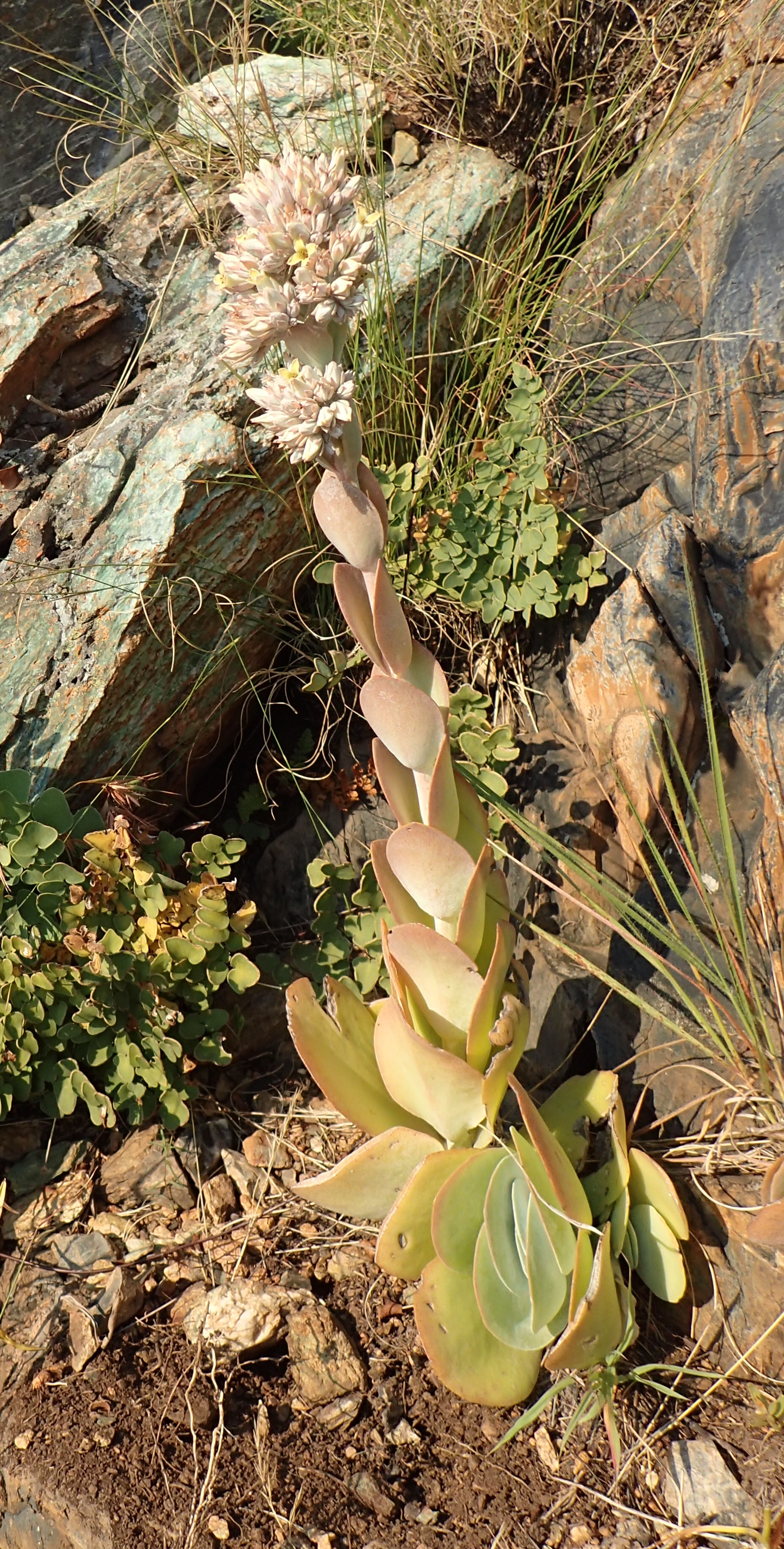
Kalanchoe deliae
The description was done by Prof. Gideon Smith from the Department of Botany, Nelson Mandela University. The article titled “Kalanchoe deliae (K. [subg. Kalanchoe] sect. Raveta; Crassulaceae subfam. Kalanchooideae), a new species from the Barberton Centre of Endemism in northeastern southern Africa” was published in the journal Phytotaxa in December 2023.
Kalanchoe deliae fits in a cluster of species with small to medium-sized to very large, paddle- to soup plate-sized leaves, and dense, elongated, usually club-shaped inflorescences. It flowers mostly from April to August, which is late autumn to winter.
It can be easily distinguished from Kalanchoe luciae with which it occurs sympatrically, by a combination of characters. It is smaller overall in stature, with smaller leaves and lacks the often intensely red infused leaves. Its sepal shape and length; corolla lobe colour, shape and orientation; pistil shape; and the shape of the nectar scales also differ. In the description it is also compared with other Kalanchoe species, namely K. crouchii, K. thyrsiflora, K, winteri, K montana, K wildii and K. benbothae to indicate its distinguishing characters.

Kalanchoe deliae in its natural habitat
“Except for the most general, no locality data from specimens or field observations are given. This deviation from widely followed taxonomic practice is justified by the fact that poaching of succulent plants from the wild in South Africa is a severe and escalating problem. It was decided not to provide any information regarding the exact whereabouts of this new species that could cause known populations to be targeted for destructive collecting.
As far as presently known, K. deliae is restricted to the central-east Mpumalanga province of South Africa, which falls in the Grassland Biome within the Barberton Centre of Endemism where it co-occurs with K. luciae, albeit with the latter preferring lower elevations. However, K. luciae has a much wider natural geographical distribution range in southern and south-tropical Africa .”
Kalanchoe deliae is named for Delia Oosthuizen who has a keen interest in botany and is based in the BCE. Delia started collecting plant specimens in 2013 and soon thereafter established the Barberton Mountainlands Nature Reserve Herbarium, where she is involved in the expansion, and physical and scientific curation of the collection. The focus of the Herbarium is the plants of the BCE and the Mountainlands Nature Reserve.
The complete description is available at the following address: https://phytotaxa.mapress.com/pt/article/view/phytotaxa.632.2.3
